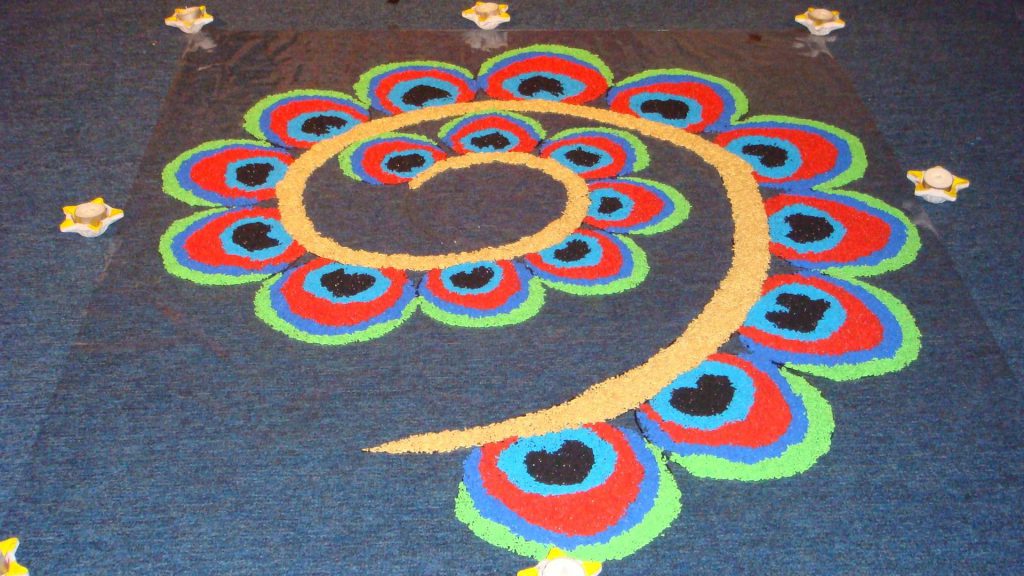

#PEACOCK RANGOLI COLOR COMBINATION SKIN#

Are you ready for it? Here are a few images of simple and beautiful Mehndi designs to begin with: 1.

Once you are all set, you can create an elegant and beautiful pattern in less than 30 minutes. You can either do it yourself or request your friend to spare some time and lend her hands for a while. Start with basic patterns and keep adding intricacies as you gain confidence. If you thought that Mehendi is exclusive for brides alone, you are so wrong! You can practice this art by taking inspiration from these simple Mehendi designs, to begin with! Simple And Easy Mehndi Designs For Beginners:ĭo you feel that applying Mehndi is a complex task and just not your cup of tea? Well, it’s no rocket science if you practice it every day. With time, the patterns and techniques have changed to keep up with contemporary tastes. In the 12th Century, the Mughals introduced intricate Mehndi designs on hands and legs to decorate the bodies. There are also beliefs that the more pigmented your Mehendi design is, the better your married life will be! Whether they are mere tell-tales or facts, applying even a simple Mehandi design offers numerous health benefits, apart from making our hands look pretty!īut when and where did this tradition of Henna body art all began? The art of decorating human skin with Henna was mentioned in the ancient Hindu Vedas, which indicates how old this form is. Remember this yesteryear’s Bollywood song “Mehndi LagakeRakhna, Doli Sajak keRakhnaa…”? It roughly translates to “Put your Mehendi on, decorate your Palanquin, as your Prince is on his way to take you away with him”! The emphasis is more on the Mehendi, as it is the first step to kickstarting a traditional wedding celebration.


 0 kommentar(er)
0 kommentar(er)
